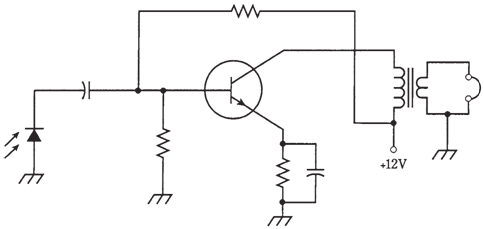A modulated-light receiver
Modulated light beams are demodulated easily by using photodiodes or photovoltaic cells, as long as modulating frequency is not too high. At audio frequencies, a circuit like the one in the figure given below will provide sufficient output to drive a headset. This demonstrates method by which fiberoptic signals can be detected.

Figure--A simple modulated-light receiver.
For use with the speaker, another bipolar amplifier stage can be added following stage shown. To increase sensitivity of receiver (i.e., to allow reception of fainter modulated-light beams), an FET stage can be added between photovoltaic cell and bipolar stage shown.Modulated-light experiments are done with simple apparatus, costing only a few dollars. If reasonably large lenses and/or reflectors are used, line-of-sight voice communications can be taken for distances up to many hundred feet, by using circuits based on transmitter of the figure given below and the receiver of figure given to us. With additional amplification and large reflectors, range can be increased to many miles on clear nights. This could make a big science fair project.